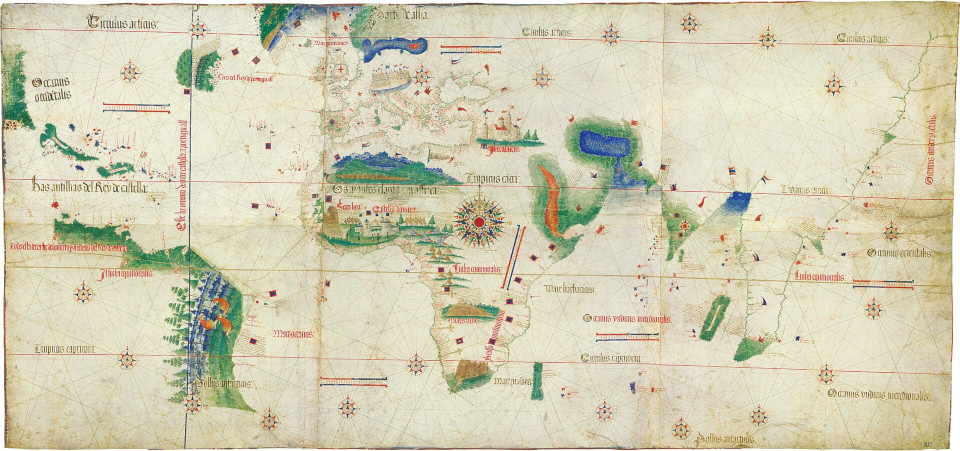
In 1492, about sixty million people lived in Europe, fifteen million fewer than lived in the Americas. They lived and were ruled in villages and towns, in cities and states, in kingdoms and empires. They built magnificent cities and castles, cathedrals and temples and mosques, libraries and universities. Most people farmed and worked on land surrounded by fences, raising crops and cattle and sheep and goats. “Be fruitful, and multiply, and replenish the earth, and subdue it,” God tells Adam and Eve in Genesis, “and have dominion over the fish of the sea, and over the fowl of the air, and over every living thing that moveth upon the earth.” They spoke and wrote dozens of languages. They recorded their religious tenets and stories on scrolls and in books of beauty and wonder. They were Catholic and Protestant, Jewish and Muslim; for long stretches of time, peoples of different faiths managed to get along and then, for other long stretches, they did not, as if they would cut out one another’s hearts. Their faith was their truth, the word of their God, revealed to their prophets, and, for Christians, to the people, through the words spoken by Jesus—the good-spell, or “good news”—their Gospel, written down.
Before 1492, Europe suffered from scarcity and famine. After 1492, the vast wealth carried to Europe from the Americas and extracted by the forced labor of Africans granted governments new powers that contributed to the rise of nation- states.
[See These Truths, pg9]
